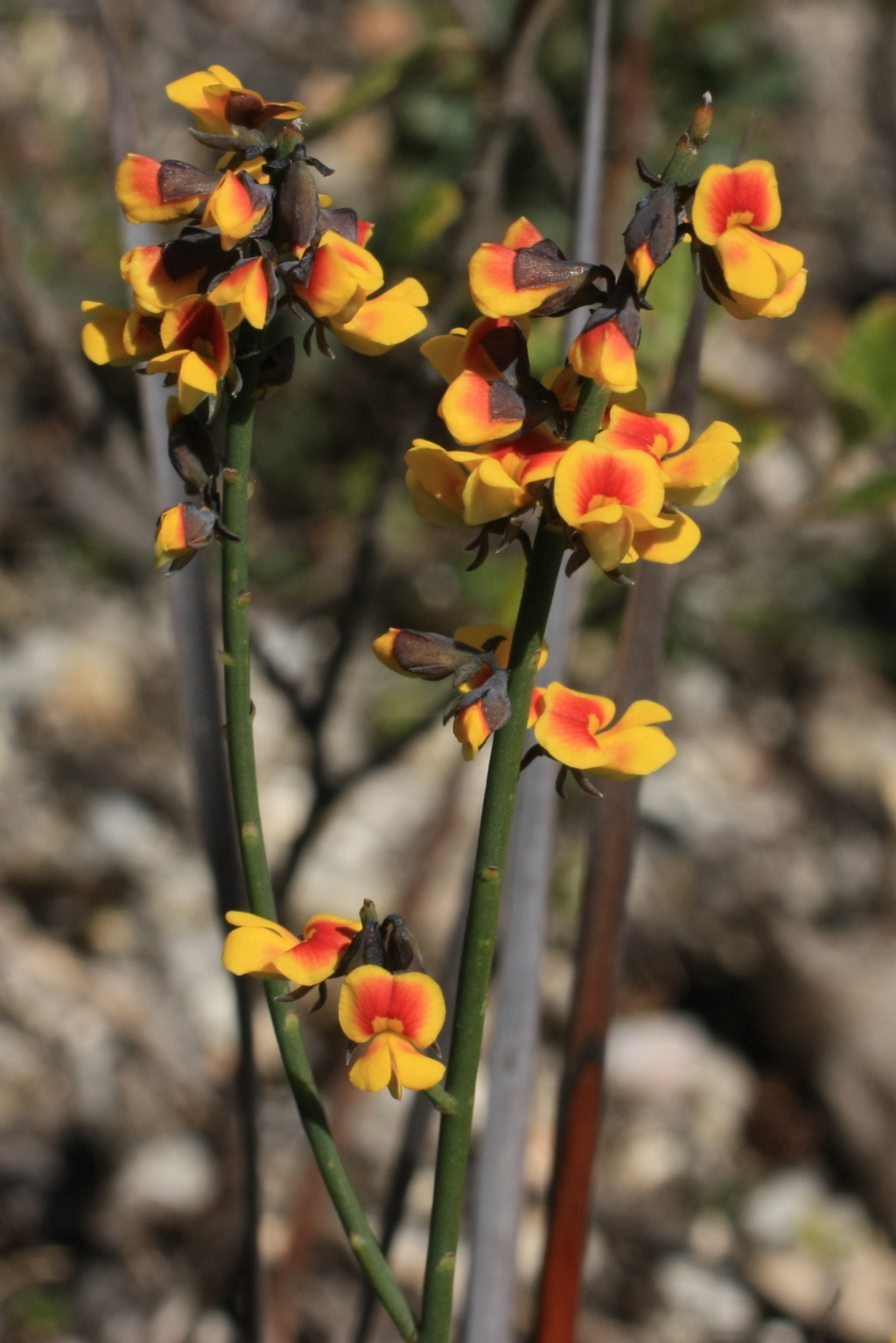Sphaerolobium vimineum
Sm. Leafless Globe-peaErect rush-like shrub, to c. 1 m tall; stems terete, faintly ribbed, glabrous; branchlets few, long, ascending, usually not forked at tips. Leaves, when present, linear-lanceolate, to c. 8 mm long, scattered; stipules absent. Flowers usually 2 or 3, clustered together forming long terminal racemes; peduncle to c. 0.5 mm long, produced into a subulate tip between flowers; pedicel 1–3 mm long; bracts obovate, c. 1 mm long; bracteoles obovate, 1.5–3 mm long, same colour as calyx, inserted below calyx, caducous. Calyx 3–4 mm long, darkly punctate on a green background, more or less glabrous, teeth imbricate, unequal, longer than tube, upper lip cuneate, lower lobes subulate; petals yellow with reddish markings; standard transverse-elliptic, 5–6 mm long, rich yellow with a central reddish semicircle; wings longer than keel; keel truncate, shorter than, and enclosed by, wings; style wing nearly as long as broad, less than one-quarter the length of style. Pod globose, 3–5 mm diam., turgid, long-stipitate; seeds 1–2, c. 2 mm long, sometimes mottled. Flowers Sep.–Dec.
LoM, Wim, GleP, VVP, GipP, OtP, WaP, CVU, GGr, DunT, EGL, EGU, WPro, HSF, OtR, Strz. Also WA, SA, Qld, NSW, Tas. Scattered across higher rainfall parts of southern Victoria in sclerophyll forests, woodlands and heathlands.
Jeanes, J.A. (1996). Fabaceae. In: Walsh, N.G.; Entwisle, T.J., Flora of Victoria Vol. 3, Dicotyledons Winteraceae to Myrtaceae, pp. 663–829. Inkata Press, Melbourne.
 Spinning
Spinning

